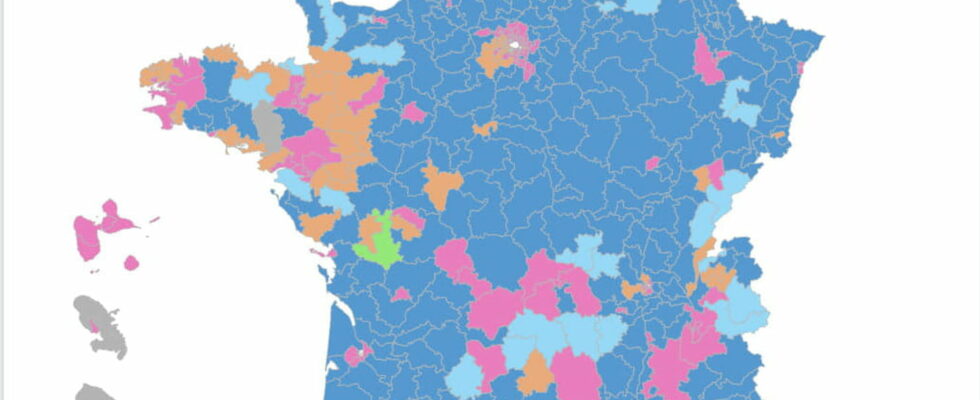The map of the results of the legislative elections after the first round of voting already specifies the balance of power between the extreme right, the union of the left and the presidential majority, but the trends could still change in the second round.
What will the National Assembly look like after the legislative elections? The results of the first round of voting already give an idea of the balance of power that could govern the chamber and the predictions that have been announcing a profound renewal of the French political landscape since the beginning of the campaign should prove to be correct. We must wait for the second round of the legislative elections scheduled for this Sunday, July 7 to know the future composition of the National Assembly and most certainly the political color that a new government will display, but the first results of the legislative elections are rich in lessons.
The presidential camp knows that its chances of maintaining a majority in the Palais Bourbon are now slim after coming in third place in the first round results, behind the New Popular Front and, above all, with a clear lag behind the National Rally. The far-right party came out on top in the majority of constituencies, 297 according to figures from the Ministry of the Interior, compared to 157 for the Union of the Left and 69 for the presidential majority.
The map of the legislative results, colored according to the data from the first round, allows you to see this right-wing wave and to identify at a glance which is the dominant party in each constituency. See who came out on top in your constituency using the map below. By clicking, you will have access to the details of the results, but also to the results in the cities of the department.
The balance of power visible after the first round of the legislative elections will not necessarily be those that will remain in place at the end of the ballot, because the vote in the second round could still change the situation in several constituencies. If 75 constituencies have already elected their MP, duels, three-way races and even some four-way races are planned for the second round.
Depending on the forces present, particularly during duels, the transfer of votes could benefit the opposing candidate from the RN candidate, even when the latter came out on top, due to the Republican front or at least calls to block the far right. In the event of three-way contests, the candidates who win the first round will be at an advantage unless the candidate who came in third withdraws, which would transform the election into a duel and subject it to the same logic.
For the second round of the legislative elections, 306 three-way races are announced for 190 duels and 5 four-way races. But the candidates have until Tuesday, July 2 at 6 p.m. to withdraw and already 185 candidates have decided to withdraw from the election in favor of another, often to block the extreme right. This brings the number of three-way races to 125 and the number of duels to 372 according to The world. Figures which may still change.
An absolute majority possible after the legislative elections?
RN and allies, united left or presidential majority. Can one of the three blocs become the majority in the National Assembly after the two rounds? On a national scale and according to projections, the RN still starts in a strong position for the second round. But if it should obtain a greater number of deputies, it could still be deprived of an absolute majority. The tripartism that is taking hold in France could also put an end to the French political stability of recent decades, because without a majority, even the leading force in the National Assembly could not govern. In the absence of a majority granted to a party or a bloc, only a coalition would make it possible to form a new government capable of resisting a motion of censure. But it will still be necessary to find one.
